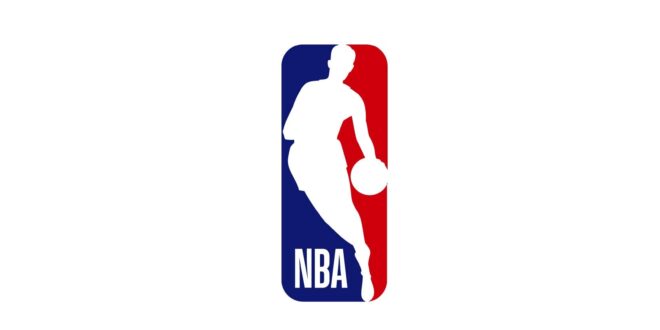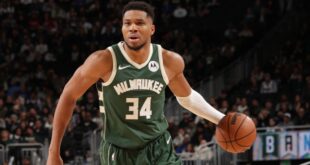As the dust settled in the Eastern Conference of the NBA playoffs this week, the two dominant teams from the regular season, Cleveland and Boston, disappeared from the scene. The Cavaliers, who finished the season with 64 wins, and the Celtics, at 61 wins, both fell victim to early exits after suffering four losses in just ten days, marking the beginning of summer for both squads.
In their place, the New York Knicks and the Indiana Pacers emerge as the last two teams standing. The Knicks secured their spot by decisively defeating the Celtics in a Game 6 showdown on Friday at Madison Square Garden, while the Pacers delivered a surprising blow to the Cavaliers, knocking them out in five games at Rocket Mortgage FieldHouse on Tuesday.
The upcoming matchup pits the No. 3 seed against the No. 4 seed—an unexpected pairing compared to what Las Vegas predicted in October for the Eastern Conference finals. Viewers can anticipate a clash between two of the league’s hardest-working squads, each emphasizing defense yet employing contrasting offensive strategies.
This marks the fourth occasion that New York and Indiana have met in the playoffs with the NBA Finals in sight. Their last encounter in this stage was in 2000, when the Pacers triumphed and moved forward. In both 1994 and 1999, however, it was the Knicks who eliminated Reggie Miller and his Indiana cohort.
Recent matchups present a mixed history. New York won the regular season series 2-1, but the Pacers edged them in last year’s Eastern Conference semifinals, winning 4-3. Notably, the last seven contests between these teams have finished with margins exceeding ten points, averaging a decisive 20.7 points.
Expect a tighter contest this time around.
For those interested in watching the Knicks versus Pacers series:
All times listed are in Eastern Standard Time
* = If necessary
**Pace:** The Knicks and Pacers finished the 2024-25 season with remarkably similar statistics and efficiency ratings. Both limited their opponents to an average of 113.3 points per 100 possessions and differed by just 1.9 points per 100 offensively.
However, a closer look reveals distinct styles. New York tends to embrace a halfcourt approach, allowing lead guard Jalen Brunson to create scoring opportunities for himself or setting up teammates. Brunson, alongside center Karl-Anthony Towns, averaged over 50 points per game during the regular season. The Knicks’ three other starters—Josh Hart, OG Anunoby, and Mikal Bridges—will need to maintain their scoring averages, especially since New York’s bench contributes the lowest in the league with just 21.7 points per game while logging the fewest minutes.
The Knicks moved past the Celtics in six games and now face a well-rounded Pacers team known for its fast-paced play.
Indiana has demonstrated a rare ability to apply pressure defensively, pushing opponents up the court for a full 94 feet before swiftly transitioning to offense—even after made shots by their adversaries. Seven Pacers players averaged in double figures, with forward Pascal Siakam being their only contender in the top 50 scorers in the NBA (20.2 points). Meanwhile, Tyrese Haliburton is making a name for himself with clutch plays, yet he still primarily looks to facilitate for his teammates.
In terms of pace, as defined by the NBA, the Pacers ranked seventh, while the Knicks landed at 26th.
**Towns from Deep:** Karl-Anthony Towns has argued convincingly that he may be the most skilled shooting 7-footer in NBA history. After winning the 3-Point Contest during All-Star Weekend a few years back, he boasts a career three-point shooting percentage of 40%. His ability to stretch the court for Brunson and the wings is significant, posing a challenge for opposing bigs who fail to contest him beyond the arc.
However, Towns is coming off a series against Boston where he struggled, shooting just 3-for-19 (15.8%) from three-point range. Regardless of the broader implications of his shooting range, the Knicks depend on Towns to find scoring opportunities from outside. Indiana’s Myles Turner can also hit from range and while he might not be the quickest defender, others on the Pacers like Siakam and Obi Toppin can match up with Towns on the perimeter.
**For the Pacers:** Indiana possesses the depth to use an 11-man rotation when needed. Ten players averaged at least 19 minutes, allowing coach Rick Carlisle to adapt his lineup as needed. In contrast, Knicks coach Tom Thibodeau is often criticized for heavily relying on just seven or eight players. Fortunately for New York, their starters have remained healthy despite the heavy minutes, thanks in part to longer postseason timeouts and no back-to-back games.
Nevertheless, Indiana boasts more versatility and depth within its lineup.
**For the Knicks:** OG Anunoby is a key player for New York, influencing the team’s performance based on his individual contributions. Since joining the Knicks two seasons ago, Anunoby has taken on a larger offensive role, helping the team to a combined 80-42 record (including the playoffs). This season, they are 28-10 when he scores 20 points or more. He is also likely to draw defensive assignments against his former Raptors teammate Siakam, among others.
**58.3% —** The Pacers have achieved an effective field goal percentage of 58.3% through the first two playoff rounds, which would be the highest in NBA history if maintained.
While Indiana’s regular season offense (115.4 points per 100 possessions) was not as effective as the previous year, they’ve stepped it up to 117.4 points per 100 during the playoffs, leading the remaining teams in that statistic.
Among players with at least 100 playoff field goal attempts through Friday, Aaron Nesmith (65.2%), Andrew Nembhard (60.6%), and Pascal Siakam (60.1%) lead in effective field goal percentage. Nembhard has shown the most significant improvement from his regular-season percentage (50.6%), alongside five other Pacers (excluding Tyrese Haliburton and Obi Toppin) who have also upped their shooting.
According to analysis from Second Spectrum, the Pacers rank seventh in shot quality during the playoffs while the Knicks sit at the bottom, but Indiana has exceeded the expected value of their shots more than any other team—indicating a potential reversion to the norm in the conference finals.
The Knicks experienced their worst defensive stretch of the season in Games 3-5 of the conference semifinals, but they showcased strong defense in their Game 6 conclusion against the Celtics. Over the series, they held Boston to 8.9 fewer points per 100 possessions than during the regular season, similarly limiting Detroit to 5.1 points fewer than their season average in the opening round.
– John Schuhmann
**Pacers in Six:** The Knicks haven’t reached the Finals since 1999 and have not won a championship in 52 years. In contrast, Indiana’s only Finals appearance was in 2000 when they lost to the Shaquille O’Neal and Kobe Bryant-led Lakers. One of these teams is set to revitalize their championship aspirations. Indiana’s depth and their experience in this round last spring (when they were swept by the Celtics) may tilt the balance. Moreover, using a deeper rotation allows for foul distribution, which becomes crucial in physical matchups.
Home-court advantage should not be a significant factor in this series. The Knicks claimed that edge by winning one more game than Indiana during the regular season, but both teams have proven to be strong on the road. New York recorded a 24-17 away record, including 17-9 against Eastern Conference foes, and they are 5-1 so far this postseason. Indiana finished 19-9 after December 6 and is 4-1 in playoff games held in Milwaukee and Cleveland.
* * *
Steve Aschburner has been covering the NBA since 1980. You can reach him via email here, explore his archive here, and follow him on X.
The opinions expressed on this page may not necessarily reflect those of the NBA, its franchises, or Warner Bros. Discovery.
 NBA News NBA News, Match Reports and Updates
NBA News NBA News, Match Reports and Updates



